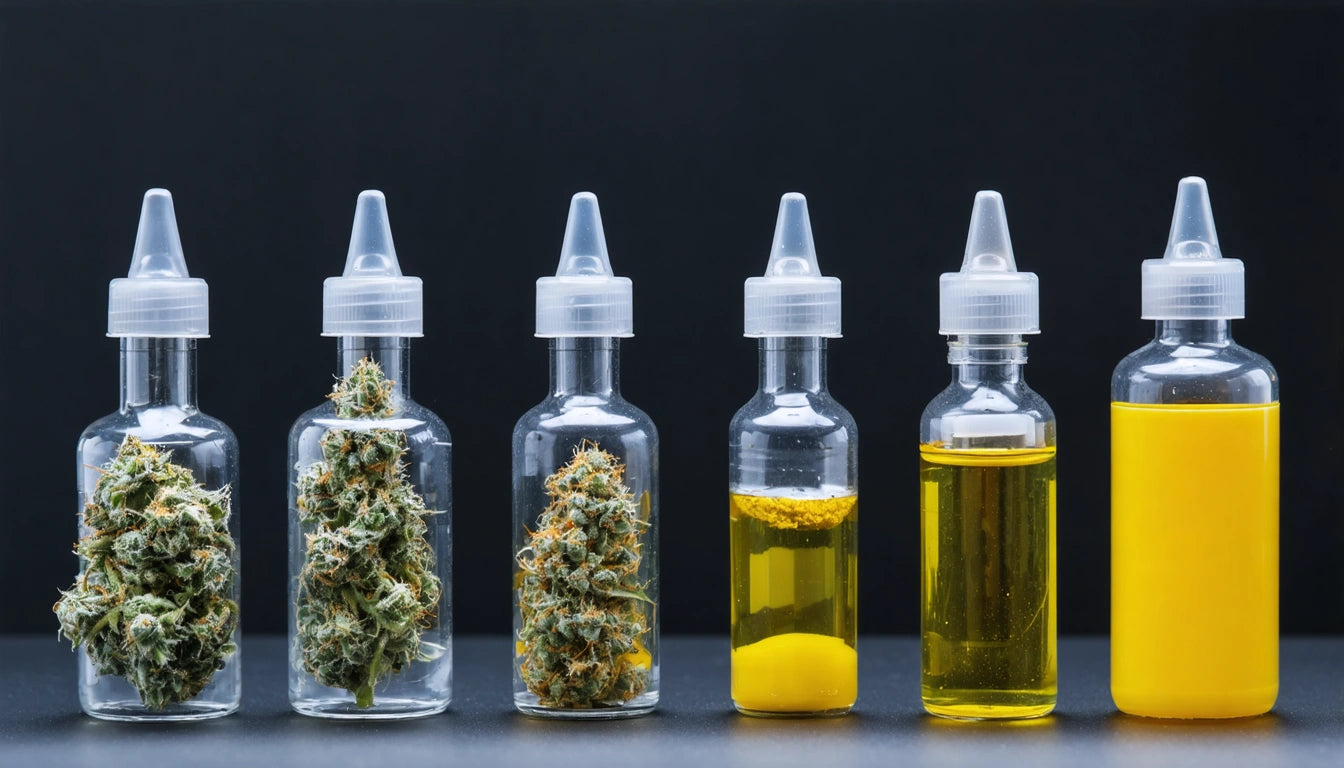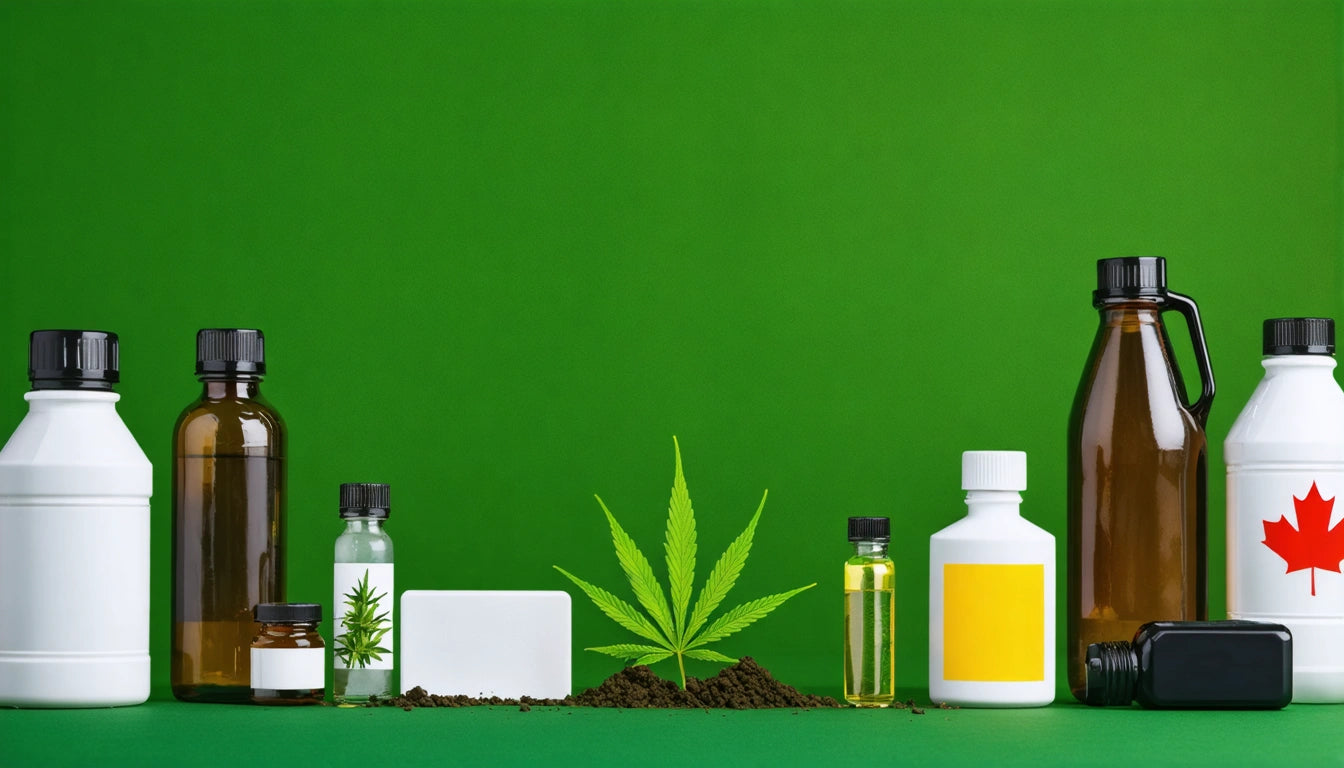Table of Contents
Cannabis concentrates have revolutionized consumption methods by offering potent, refined products that showcase the plant's essential compounds. The primary distinction in concentrate production lies between solvent and solventless extraction methods, each yielding products with unique characteristics, potency levels, and consumption experiences.
Understanding Cannabis Concentrates
Concentrates are cannabis products created by extracting desirable compounds like cannabinoids and terpenes from the plant material. The result is a product with significantly higher potency than flower, often reaching THC levels of 60-90% compared to flower's typical 15-25%.
The extraction method fundamentally determines a concentrate's properties, including its consistency, flavor profile, and potential residual compounds. Understanding these differences helps consumers make informed choices based on their preferences for potency, flavor, and consumption method.
Solvent-Based Extraction Methods
Solvent-based concentrates use chemical solvents to strip cannabinoids and terpenes from plant material. Common solvents include butane, propane, COâ‚‚, and ethanol, each producing distinctive end products.
Butane Hash Oil (BHO)
BHO products include shatter, wax, budder, and crumble, differentiated by their consistency and texture. The extraction process involves passing liquid butane through cannabis material, dissolving the trichomes, and then purging the solvent through heat and vacuum.
COâ‚‚ Extraction
COâ‚‚ extraction uses pressurized carbon dioxide to pull cannabinoids from plant material. This method is considered cleaner than hydrocarbon extraction and is commonly used for vape cartridge oils due to its ability to produce a refined, consistent product.
Ethanol Extraction
Ethanol effectively extracts both water and oil-soluble compounds, making it versatile but potentially less selective. Products made with ethanol often undergo winterization to remove unwanted plant compounds like chlorophyll and waxes.
Solventless Extraction Techniques
Solventless concentrates are produced without chemical solvents, instead using mechanical or physical means to separate trichomes from plant material. These methods are often considered more artisanal and may preserve a fuller spectrum of the plant's original compounds.
Rosin
Rosin is created by applying heat and pressure to cannabis flower, hash, or kief. This straightforward process can be performed with equipment as simple as a hair straightener or as sophisticated as a hydraulic press. The result is a sappy, translucent concentrate with excellent terpene preservation.
Ice Water Hash
Also known as bubble hash, this method uses ice water and agitation to separate trichomes, which are then filtered through progressively finer mesh screens. The quality of ice water hash is often rated on a six-star scale, with six-star being the highest quality "full-melt" hash.
Dry Sift
Dry sift is produced by gently sieving dried cannabis across fine mesh screens, allowing trichome heads to separate from the plant material. The process is similar to collecting kief but with greater refinement and purity.
For those interested in exploring solventless options, we offer premium papers and cones for concentrate-infused pre-rolls that complement the pure flavor profiles of these extracts.
Comparing Potency and Effects
While both extraction methods can produce highly potent products, solvent-based concentrates often achieve higher THC percentages due to their efficiency in extracting cannabinoids. Understanding concentrate labels and potency information is essential for responsible consumption.
Solventless extracts, particularly full-spectrum products like rosin, often provide a more complete representation of the plant's entourage effect, potentially delivering a more nuanced experience despite sometimes lower THC percentages.
Flavor Profiles and Terpene Preservation
Terpene preservation varies significantly between extraction methods:
- Solventless extracts like rosin generally excel at preserving the plant's original terpene profile, resulting in rich, complex flavors
- BHO extractions can preserve terpenes well if performed at low temperatures (live resin)
- COâ‚‚ extraction may capture fewer volatile terpenes but offers consistency
- Ethanol tends to pull more chlorophyll and plant waxes, potentially affecting flavor
Comparing products like live resin and rosin reveals how extraction methods directly impact the consumer experience through flavor and aroma.
Consumption Methods and Equipment
Concentrate consistency often determines the ideal consumption method. Various devices are available for dabbing or vaping concentrates, from traditional dab rigs to electronic vaporizers.
Solvent-based concentrates like shatter or wax typically work well with traditional dabbing equipment, while solventless products like rosin may perform better at lower temperatures to preserve terpenes. Understanding proper dabbing tools, temperatures, and techniques enhances the consumption experience regardless of concentrate type.
Health and Safety Considerations
Health-conscious consumers often prefer solventless extracts due to the absence of potential residual solvents. While regulated solvent-based products undergo testing to ensure solvent levels are below safety thresholds, some users prefer the peace of mind that comes with completely solvent-free products.
For medical applications, both types have their place. Patients should understand what to know about concentrates for medical use, including potency considerations and dosing precision.
Proper storage is crucial for both types of concentrates. Following storage tips to preserve flavor and potency helps maintain product quality regardless of extraction method.
Market Trends and Consumer Preferences
The concentrate market continues to evolve with consumer preferences shifting toward more refined, cleaner products. Solventless extracts have gained significant market share as consumers become more educated about extraction methods and seek products they perceive as more natural or artisanal.
However, solvent-based products remain dominant in many markets due to their scalability, consistency, and versatility in product formulation. Understanding the risks and benefits of high-THC concentrates is essential as consumers navigate an increasingly diverse product landscape.
Whether choosing solvent or solventless concentrates ultimately comes down to personal preference, consumption method, desired effects, and individual health considerations. Both categories offer unique benefits and continue to advance through technological innovation and refined techniques.











Leave a comment
All comments are moderated before being published.
This site is protected by hCaptcha and the hCaptcha Privacy Policy and Terms of Service apply.